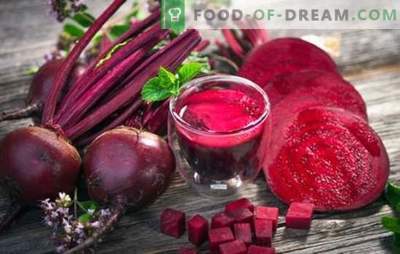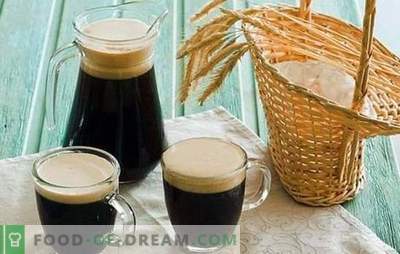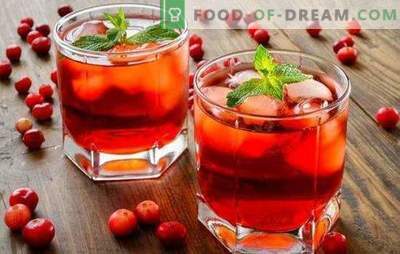Birch sap, or Berezovitsa, as it is called by the people, has been famous for its healing properties since ancient times - it is an environmentally friendly, tasty, healing, refreshing soft drink. The healing secret is that in spring birch splashes out into the leaves all the vital forces that she saved during the winter.
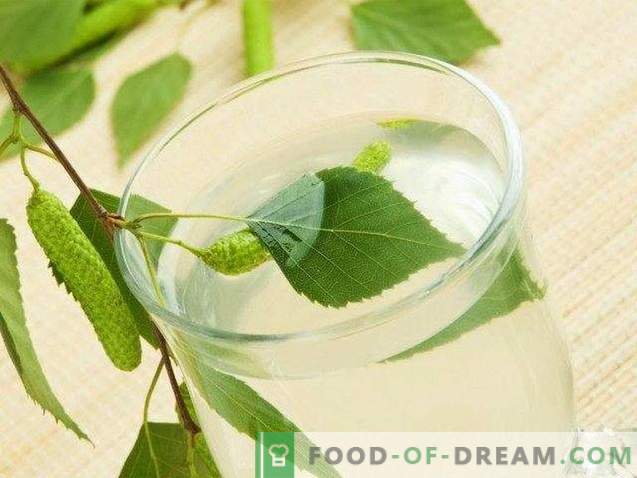
Content:
- When is birch sap collected?
- How to extract birch sap?
- Benefits of birch sap
- How to prepare birch sap to use?
When is birch sap collected?
Birch sap is collected until sticky leaves are dismissed (about a month before the leaves and flowering appear, during the period of melting snow), sap flow begins in birch trees, called “weeping birch”. For 15-20 days, birch gives us its sweet juice.
How to extract birch sap?
Option 1: Hole in the barrel
If you delve into the library or the Internet, looking for the rules of collecting birch sap, then the general recommendations will be approximately like the following. Juice should be collected (experts call targeted extraction of birch sap by tapping) from mature trees with a well-developed crown and a trunk of at least 30 cm across. At the same time, a small hole (channels) with a diameter of up to 2 cm is drilled in the bark, depending on the diameter of the tree, one to four holes are made on it, and a tubule or a tin tongue is taken from it, through which birch sap falls into the dishes attached on a wire or the rope.
Important! At the end of the birch sap collection, the wound is closed with a wooden stopper and sealed with garden pitch, wax, clay or clay. This is necessary in order to prevent the entry of disease-causing organisms through the notch, which can cause the death of the tree. Here are just a way to collect birch sap, which is described everywhere, we almost never used. Firstly, to make the juice flow only through a straw or tin gutter is quite problematic, often a large part of it flows past the trunk. Secondly, it is not always possible to attach the bottle or jar so that the drops fall inside, and if this succeeds, it is often when there is a little juice in the dishes, it is shifted under its weight, and the birch sap no longer falls into the neck. Thirdly, it is necessary to make a triangular tongue of birch bark under the hole, thanks to which the loss of sap can be avoided, and the traces of these actions remain for a long time, if not forever, disfiguring slender white-stemmed birch trees.
Moreover, if you follow the instructions and drill a hole no more than 2 cm, then in a couple of days the birch sap will flow much slower than at the beginning of the damage. And here are two ways: either to increase the hole in the diameter, or to make a new one. We did not see both of them desirable, therefore this method was not popular with us. Sometimes I had to meet in the birch forest belts the bottles hanging on the trunk, and above them there are several old and fresh holes or, even worse, deep notches with an ax. Unfortunately, this is how recommendations that look common in the literature look in practice.
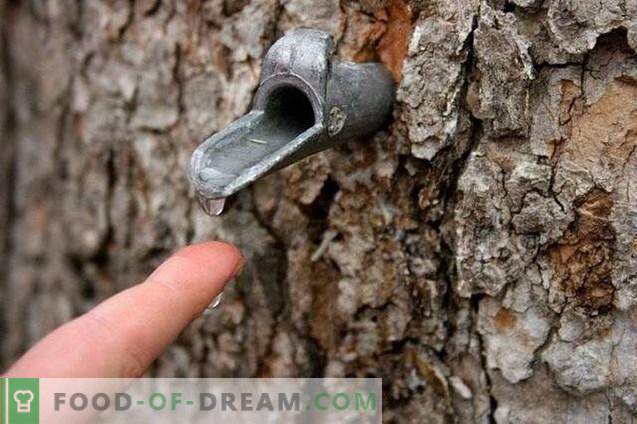
Option 2: Collecting birch sap from a branch
Having rejected the most inconvenient, destructive and not aesthetic, in our opinion, method, we collected birch sap in a different way. We chose a suitable branch, about a finger thick or a little more, but extending not directly from the trunk at an angle upwards, but from a thicker branch or almost horizontally. Then, an oblique cut was made and a branch was pushed into the neck of a 1.5-liter or liter bottle, depending on the flow rate. To fix the bottle on the branch with the help of a wire was not a big pile. Sometimes suitable branches were located at a great distance from the ground, and we had to climb a tree. From this birch sap seemed even sweeter. However, this may be due to the fact that it has passed a long way down the trunk and absorbed more glucose and fructose - sugars, which determine the sweet taste of the healing drink. The unbreakable rule was that we put one bottle on one tree, or at most two. This ensured the stability of sap flow throughout the entire period, and the limitation of injuries of some of the most “sweet” trees. The latter most often stood apart on some well-heated sun hillock. In some places there was still snowing, and the birch trees were just beginning to move away from winter sleep, and then birch sap was already running. We tried not to touch the young birch trees, but preferred adult grown trees.
It is better not to collect the juice near villages and villages. It is not worth once again endangering the trees already exhausted by people's attention. In addition, the sap flow here is always late, it was rather sluggish and short. And the sap of a tree growing near a busy highway or in the industrial zone of the city will generally only bring harm instead of benefit.
And yet, a number of factors influence the amount of birch sap: latitude, forest type, weather in summer and winter before tapping and during tapping, hours of the day, fullness of stand, degree of tree domination.
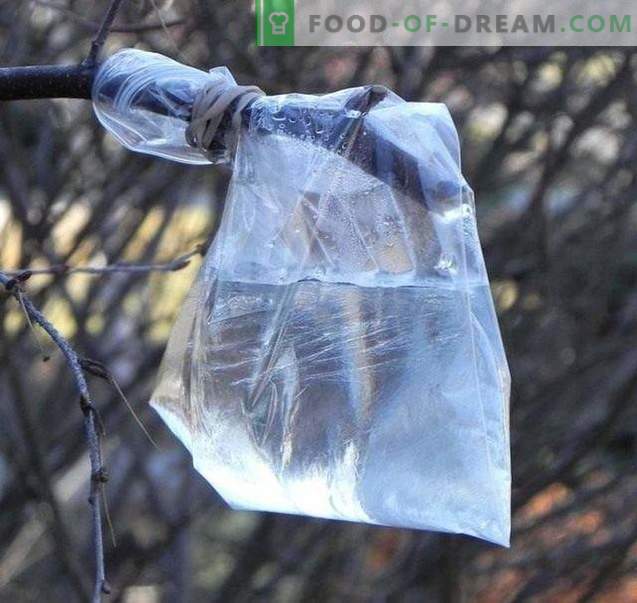
Benefits of birch sap
For medicinal purposes, two types of birch are used more often - drooping and sprawling. Their buds, leaves, juice, ash (activated carbon), tar obtained from the dry distillation of wood, xylitol (a sugar substitute for diabetics derived from wood waste) are all widely used in medicine. Birch sap contains 0, 5 - 2% sugar, it contains enzymes, organic acids, tannins, salts of calcium, potassium, iron, plant hormones, glucose and substances with high antimicrobial activity (phytoncides). Every year a person must consume at least 6 liters of birch sap. This healing drink destroys urinary stones, is effective in treating stomach ulcers and liver, headache, bronchitis, cough, helps with rheumatism, radiculitis, arthritis. In addition, birch sap purifies the blood, has a regenerating effect, stimulates the metabolism, and is also an excellent dietary and refreshing drink. Systematic reception of birch sap has a tonic and tonic effect. Doctors say that if you drink at least a glass of juice a day, drowsiness, tiredness, irritability will disappear. In general, drinking birch sap in its pure form is a pleasure. This is a pleasant, refreshing and invigorating drink.
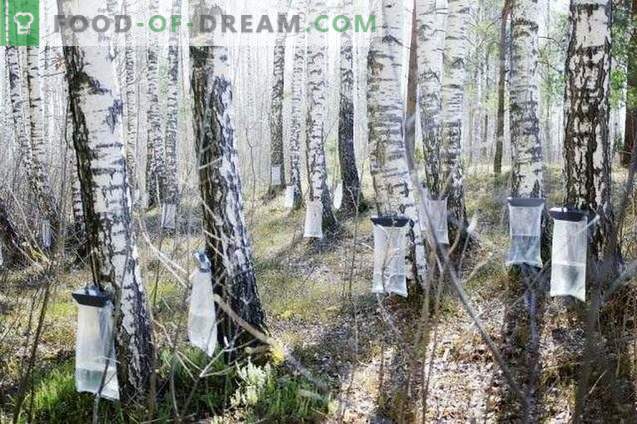
How to prepare birch sap for use?
125 g of sugar and 5 g of citric acid are added to 1 liter of birch sap. Then filtered, poured into jars, pasteurized and twist the lids. It is useful to mix birch sap with other juices from fresh fruits and vegetables, as well as to insist on mint leaves, lemon balm, thyme, St. John's wort, lime blossom, hips, cranberries.
Birch kvass
In an oak barrel with birch sap, a bag of burnt rye bread rusks or breadcrumbs is lowered onto a rope. After two days, fermentation will begin. Then in a barrel oak bark, berries or leaves of cherry, and also fennel stalks are poured. Two weeks later, kvass is ready.
There is another recipe. Birch sap is heated to 35 ° C, put in it the yeast at the rate of 15-20 g per 1 liter. Leaven put for 3-4 days in a cold place, then poured into containers and preserved.
Birch syrup
In addition to kvass, you can make a tasty and healthy syrup from fresh birch sap (sweet and slightly sour taste) (it can be added to tea or mixed with water). After evaporation, the concentration of sugar in it reaches 60-70%. This syrup has a lemon-white color and thickness of honey. It is proved that a sweet syrup made from birch sap not only prevents tooth decay, but even stops its development.
The author: Vasily Vishnevsky






